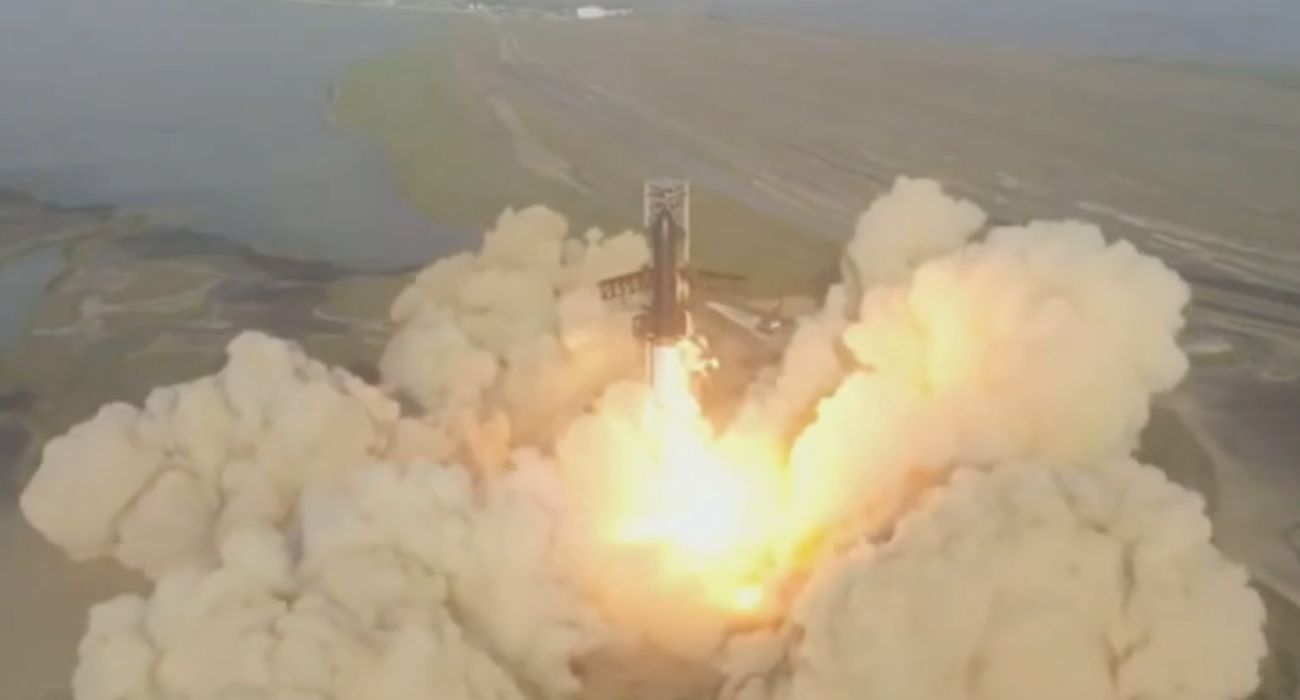2 p.m. Thursday
SpaceX released a statement on its website about the explosion.
“At 8:33 a.m. CT, Starship successfully lifted off from the orbital launch pad for the first time. The vehicle cleared the pad and beach as Starship climbed to an apogee of ~39 km over the Gulf of Mexico – the highest of any Starship to-date. The vehicle experienced multiple engines out during the flight test, lost altitude, and began to tumble. The flight termination system was commanded on both the booster and ship,” SpaceX said.
“As is standard procedure, the pad and surrounding area was cleared well in advance of the test, and we expect the road and beach near the pad to remain closed until tomorrow,” the company added.
9 a.m. Thursday
The largest rocket ever launched exploded four minutes after takeoff Thursday morning and fell into the Gulf of Mexico.
SpaceX’s Starship blasted off around 8:28 a.m. from at the company’s test facility in Boca Chica, Texas. The flight was expected to last about 90 minutes if all went well.
No one was on board.
Despite the explosion, some SpaceX employees saw it as a partial success. They opened a bottle of champagne as they watched the liftoff and cheered, “Go Starship.”
SpaceX CEO Elon Musk tweeted: “Congrats @SpaceX team on an exciting test launch of Starship! Learned a lot for next test launch in a few months.”
Congrats @SpaceX team on an exciting test launch of Starship!
Learned a lot for next test launch in a few months. pic.twitter.com/gswdFut1dK
— Elon Musk (@elonmusk) April 20, 2023
The 400-foot rocket was loaded with 10 million pounds of liquid oxygen and explosive liquid natural gas fuel. It was originally supposed to launch Monday, but the mission was postponed because of technical difficulties.
The Starship was designed as a reusable transportation system to carry cargo and crew to Earth orbit, SpaceX says. It’s projected to one day take astronauts to the moon and possibly Mars.
In comments Sunday, Musk warned the odds of success in the initial launch were low.
“Starship is the biggest rocket ever made,” Musk told reporters. “It’s over twice the thrust of a Saturn 5, the Saturn 5 moon rocket, which is largest rocket ever to get to orbit; it’s roughly twice the mass. So, we’ve got 33 engines on the booster, we’ve got six engines on the upper stage of the ship. It’s a lot of engines.
“So I guess I would just like to set expectations low. If we get far enough away from the launch pad before something goes wrong, then I think I would consider that to be a success. Just don’t blow up the launch pad.”
Nothing from the rocket was expected to be recovered for reuse after the explosion, SpaceX said.






